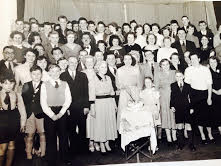Another basic test for lack of compression on any 'cylinder-cylinders' is to keep the engine stop pulled out or disconnected so no fuel is delivered and crank the engine over on the starter. The compressions if equal should sound regular like; grur-rur- rur-rur-rur-rur- rur- rur-rur and so on. If any compressions are not good the sound will not be regular but will sound something like grur-rur-wee-rur-rur-rur-wee-rur-rur-rur-wee-rur and so on or different combinations depending on which cylinders compressions are weak as the engine momentarily speeds up as it it passes the weak compression. If the engine spins around faster without much resistance at all like gru-ru-ru-ru-ru-ru-ru or worse still even faster wee-ee-ee-ee-ee-ee-ee-ee-ee and so on, not much compression at all on all cylinders. All done with a good charged up battery.
That is usually my first basic check for low compression before delving further. Same for petrol engines with ignition turned off.
To add to that, whilst cranking blow by's through either air intake or exhaust may be heard as an irregular shuuk, shuuk, shuuk which indicate inlet or exhaust valves not seating properly, either through worn or burnt out seats or too tight adjustment.
Donkeys years ago Brown Brothers the garage equipment company made a kit that checked for compression leaks which comprised of an air hose and adapter to screw into each spark plug hole. You screwed the hose into a cylinder spark plug hole with the other end connected to and air compressor receiver. Turn the engine around until the cylinder to be checked had its piston up with both valves fully shut and turned the air on. If air hissed from the air intake or exhaust pipe the valves were not seating or if excessive air was blasting out of the oil filler, breather or blew the dipstick sky high, pistons or rings in trouble.



